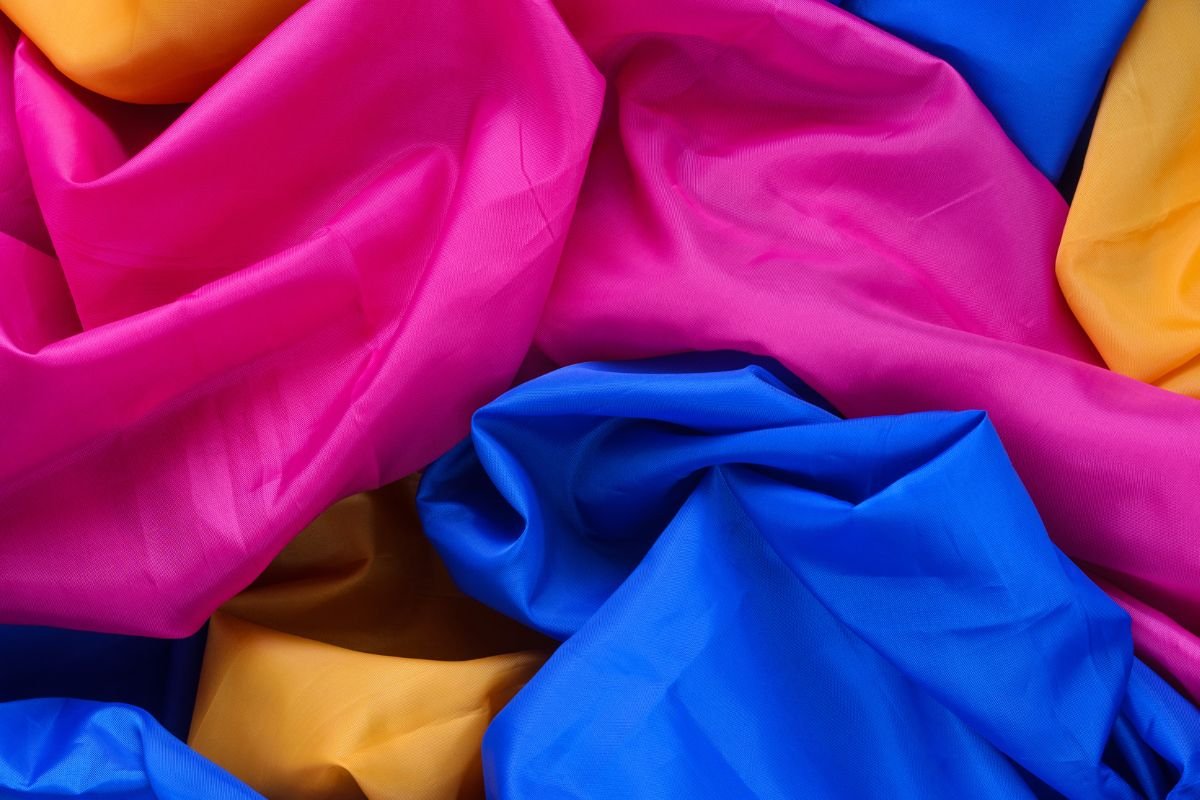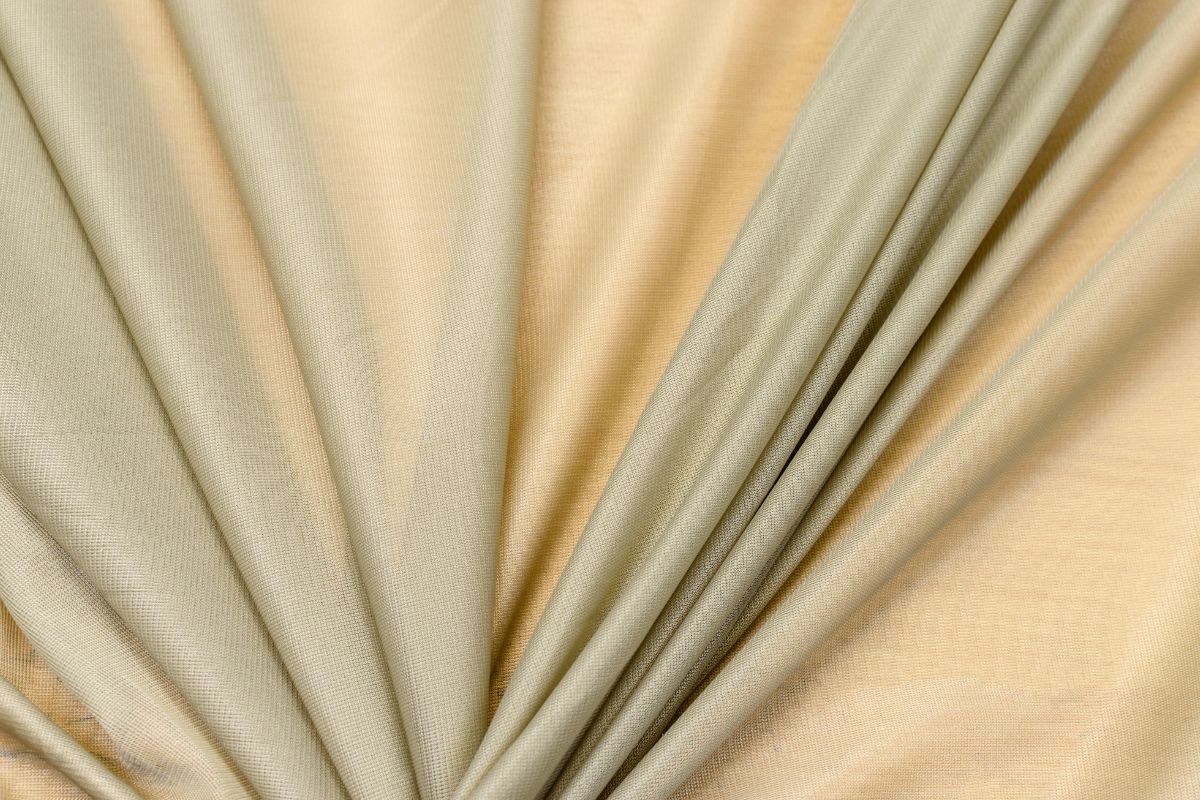Cupro fabric is made out of a blend of recycled plant fibers and chemical treatments.
While there are many different kinds of fabric, cupro is unique because it is a very thin material that resembles silk. Unlike traditional silk, however, cupro is much less expensive and easier to produce.

How Is It Made?
Cupro gets its name from the fact that the solution of copper and ammonium is used to make this specific type of rayon. Rayon, a regenerative plant-based material, became popular due to its low cost compared to silk and rose.
Cupro is a semi-synthetically produced fabric. Cellulose is taken out of cotton linters and washed.
Next, it is dissolved into a solution of cuprammonium hydroxide, which then is filtered to remove any undispersed substances using asbestos and sand filters.
The final solution is spun to become fibers that are bathed in diluted acids, alcohols, and creosols. The end product is regenerated cellulose fibrous strands.
Different Types
There are many different brands of cupro but they all fall under the umbrella term “cupro.” To make things easier to remember, let’s break down the various subcategories of cupro into four main categories:
Cuprammonium Rayons
This is the scientific name for cupra or cupro, ammonia silk or Bemberg.
This material is used in everyday textiles such as underwear, shirts, dresses and socks. In fact, it is even used in the production of paper. Its properties are similar to those of polyester, but it does not contain plasticizers.
It is produced from natural raw materials like wood pulp and cotton fibers.
Cupra/Cupro
What does ‘Cupra’ mean in China?”
The term “Cupra” is used in factories throughout China to describe the material produced there.
This is a very common practice among manufacturers because they don’t want to reveal what exactly is inside their products.
In addition, some consumers might think that these materials are actually named brands like “Cupra,” which could lead to confusion.
There are many different types of synthetic fibers and fabrics. Some people believe that the word “Cupra” refers to polyester, while others say that it refers to acrylic fiber. However, both of those statements aren’t true.
In fact, the word “Cuprum” is just a Chinese slang term for cuprammonium. It doesn’t necessarily refer to anything specific about the product. For example, you could use the same name for any type of fabric, including cotton, wool, nylon, etc.
Ammonia Silk
Ammonia is used to soften fabrics in China, where it is known as “ammonia silk”. But some companies continue to use the term even though it is illegal to sell clothing containing ammonia in the United States. Why is this?
When the chemical reacts with moisture, it creates toxic fumes. These fumes can cause skin irritation and breathing problems.
In July 2016, the US Food and Drug Administration banned the sale of clothes containing ammonia. Companies like H&M, Zara and Ralph Lauren stopped selling such products.
The FDA says that some people may develop serious health problems if they wear clothes treated with ammonia. In addition, ammonia can damage furniture and carpets.
After the ban went into effect, many retailers continued to call their fabric products “ammonia silk.” Some websites still list the chemicals used in producing the product.
Environmental Issues
It’s true to say that Cuprammonium rayon is one of the most widely used textile fibers today. Manufacturers of this type of fiber use chemical processes to turn wood pulp into a synthetic fiber that looks like cotton.
But unlike cotton, cupro rayon can’t be bleached white, and it doesn’t absorb water well. As a result, it tends to accumulate in landfills where it takes up space and emits methane gas, both of which contribute to global warming.
The Chinese government has been working hard to reduce the amount of waste produced by domestic industries. In recent years, the country has increased efforts to recycle materials such as paper, plastic, glass, aluminum, steel, and zinc.
However, recycling programs have had limited success because many of these items end up in landfills anyway.
In response to this problem, researchers at the Institute of Textile Science and Technology in Beijing have developed a way to convert waste into useful cloth.

They’ve done this by combining cellulose—the main component of plant fibers—with a solution containing copper sulfate, ammonium hydroxide, and sodium hydroxide. This mixture is then spun into yarn, which is later woven into fabric.
While Cupro rayon is certainly cheaper than cotton, it’s still far too expensive to produce. To keep costs down, the researchers have found a way to reuse some of the chemicals used during the production process.
For example, the copper sulfate solution is reused to dye the fabric green. And the caustic soda is mixed with the cuprammonium solution to create a blue coloration.
Cotton V Cupro
The world of textiles is full of interesting facts about how we make our clothes. From the fiber to the material itself, there are many differences between cotton and cupro.
But one thing they do have in common is where they come from. Both are made from plants, but the way they grow and harvest them is completely different.
Cupro is grown from the seeds of the kapok tree and cotton is grown from the boll of the cotton plant.
As it turns out, the tiny fibers left over from harvesting each type of plant go through a totally different set of processes to become the final product.
While both end up looking similar, the difference in the way they are processed makes a huge impact on how the finished products feel.
Cupro Costs
The average price per pound of cuprammonium rayons sold in the United States fellin 2016.This is because demand for natural fabrics like cotton continues to grow, while supply remains stagnant.
So how do we know what the current price of cuprammonium is? Well, there are plenty of online retailers selling it, including Amazon, Walmart, Target, and Home Depot. You can purchase cuprammonium rayon for around $30 per pound.
Conclusion
So there you have it, information on Cupro and the environmental impact of producing it in quantity.
- 15 Amazing Vegan UGG Boots Not To Miss Out On - November 23, 2022
- 15 Vegan Running Shoes To Brighten Up Your Wardrobe - November 23, 2022
- 8 Best VEJA Vegan Sneakers To Buy Today - November 22, 2022










